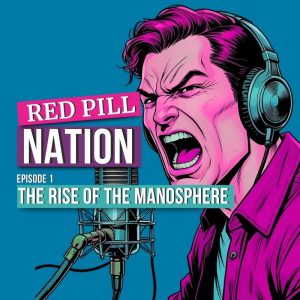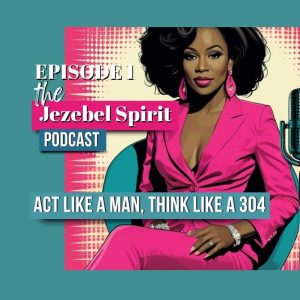The manosphere isn’t powered by anonymous forum posts alone. Its most potent fuel comes from a select group of influencers who have turned hostility toward women into a profitable brand. In Episode 3A of Red Pill Nation, the focus shifts from ideology to the individuals shaping, selling, and sustaining it, and the way their personalities and platforms accelerate its spread.
They’re not just content creators. They operate more like entrepreneurs of outrage, turning digital platforms into money-making machines that thrive on misogyny. From big-audience podcasts to short clips built for social media, they’ve figured out how to turn grievance into influence and then turn that influence into income.
“They’ve built a marketplace where anger is the product, and young men are the customers.”
The Obvious Players
Some figures in the manosphere don’t bother hiding their contempt for women. They speak plainly, brand themselves as provocateurs, and thrive on the backlash they generate.
Andrew Tate, the self-proclaimed “King of the Misogynists,” is perhaps the most infamous. His image is carefully built. A mix of wealth, aggression, and self-styled wisdom and it works as both marketing and recruitment. Every shot of a sports car or private jet is meant to drive home the same point: dominance equals value.
Then there’s Jordan Peterson, whose smooth, academic style masks deeply conservative ideas about gender. He talks in the language of “responsibility” and “order,” but beneath it is a belief system that keeps strict hierarchies in place, with women pushed into subservient roles. People often arrive for his lectures on discipline or meaning and end up taking in the gender politics woven into the message.
Part of what makes figures like this appealing is their certainty. They turn complicated social issues into something that feels clear-cut, giving followers both someone to blame and a sense of purpose.
The Economics of Hate
For these influencers, outrage isn’t an accident. It’s the product they’re selling. Provocative clips drive engagement, and more engagement means the algorithms push their content further. That push brings in new followers, who in turn buy merchandise, join paid communities, or purchase products through sponsorship deals.
A viral swipe at feminism or mocking a female public figure can draw millions of views in a matter of days. Every single view is monetized through YouTube ads, affiliate links, or direct product sales. Platforms take a slice too, pulling in money from each ad view and every transaction.
It’s a loop that keeps the whole thing running create inflammatory content, spark outrage, grow the audience, make money. Even when one influencer is banned, the model itself keeps going.
The Chameleons of the Manosphere
Not every influencer in this world shows up as an obvious villain. Some work in the in-between, mixing mainstream appeal with messaging that carries gendered undertones.
These “chameleons” often show up as life coaches, business mentors, or fitness personalities. They talk in the familiar language of self-improvement, but underneath are messages that promote male dominance and push women down. Because the misogyny is wrapped in layers of lifestyle branding, it can slip past casual audiences who don’t catch the signals.
For young men stepping into online self-help spaces for the first time, this type of influencer often becomes a low-friction introduction to manosphere ideology. The transition from productivity tips to outright misogyny can happen so gradually that followers don’t realize they’ve been radicalized until they’re deep inside the echo chamber.
The Influence Pipeline
The ecosystem works like a funnel. At the top are well-known influencers whose content edges into manosphere talking points. Their material is algorithmically linked to more explicit voices, creating a recommended-content pathway from “neutral” self-help to full-blown misogynistic propaganda.
Once someone is inside the network, they’re nudged toward joining private groups, paying for exclusive material, or showing up at live events. Each step builds loyalty and opens more ways to make money. For young men who already feel cut off or uncertain about where they belong, that sense of community can be addictive.
Why the Faces Matter
It’s easy to see the manosphere as a set of abstract ideas, but it’s much more personal than that. Movements stick when they have recognizable leaders. People who live out the values they promote and present themselves as models to be followed.
Looking closely at the personalities in this space shows us how the messaging is wrapped, sold, and made to feel normal. Even choices about clothing, tone of voice, and which platforms to post on aren’t random. They’re deliberate tools for building reach and authority.
“These men aren’t just selling ideas. They’re selling themselves as proof that the ideology works.”
Episode 3A of Red Pill Nation peels back the curtain on the obvious leaders of this movement. But the next installment will push deeper into the shadows, revealing the more discreet voices who influence the manosphere from behind carefully curated mainstream façades and how their reach might be even more dangerous than the loudest provocateurs.



